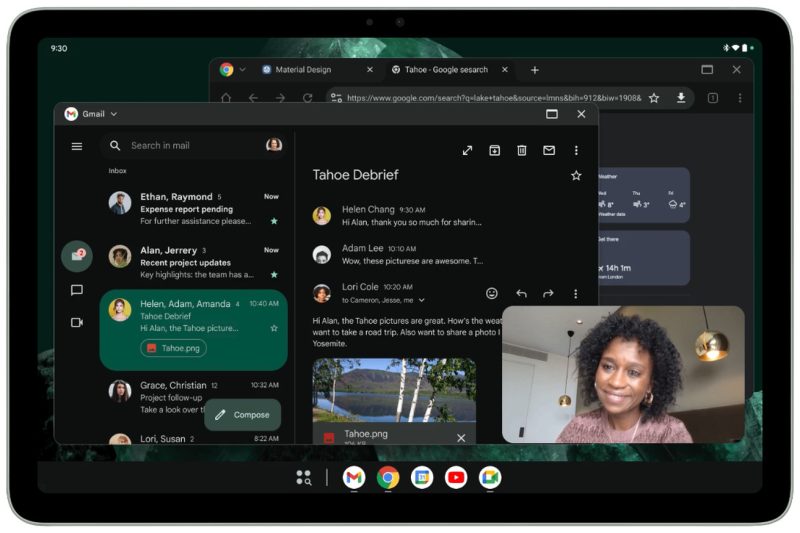
Google Explores Multi-Tasking on Android Tablets with Desktop Windowing Feature
Google Tests Desktop Windowing for Android Tablets
The recent advancements in mobile technology have significantly blurred the boundaries between traditional desktop computing and mobile devices. Google, a tech giant known for its innovative approach, is now experimenting with a new feature that could potentially bridge the gap even further. According to recent reports, Google is testing desktop windowing functionality for Android tablets, a move that could revolutionize the way users interact with their mobile devices.
The concept of desktop windowing on Android tablets aims to provide users with a more PC-like experience by allowing them to open multiple apps in resizable windows on the screen simultaneously. This feature could offer a level of multitasking flexibility that has been missing from traditional mobile interfaces, making it easier for users to switch between different applications and improve their overall productivity.
By enabling desktop windowing on Android tablets, Google is addressing a common challenge faced by users who rely on their tablets for both work and entertainment purposes. While tablets are convenient for consuming content and performing simple tasks on the go, the lack of robust multitasking capabilities has often limited their utility as productivity devices. With desktop windowing, users can take advantage of the larger screen real estate on their tablets to work more efficiently and seamlessly transition between different tasks.
The potential impact of Google’s desktop windowing feature extends beyond individual users. Businesses that have embraced mobile technology for remote work and collaboration could benefit from enhanced multitasking capabilities on Android tablets. By enabling employees to run multiple apps side by side and easily share content between them, Google’s new feature could streamline workflows and improve overall efficiency in a variety of professional settings.
Moreover, the introduction of desktop windowing on Android tablets could have significant implications for app developers and the broader Android ecosystem. Developers may need to optimize their apps to support this new functionality, creating opportunities for innovation and creativity in designing user interfaces that work seamlessly in a multitasking environment. As users become accustomed to the convenience of desktop windowing, demand for apps that leverage this feature could increase, leading to a more diverse and dynamic app marketplace.
While Google’s desktop windowing feature is still in the testing phase, the initial response from users and tech enthusiasts has been largely positive. Many are excited about the prospect of transforming their Android tablets into more powerful productivity tools while retaining the portability and convenience that make tablets appealing in the first place. If Google decides to roll out desktop windowing to a wider audience, it could redefine the way we interact with our tablets and pave the way for a new era of mobile computing.
In conclusion, Google’s experimentation with desktop windowing for Android tablets represents a significant step towards enhancing the productivity and multitasking capabilities of mobile devices. By enabling users to multitask more effectively, collaborate seamlessly, and work more efficiently on their tablets, Google is empowering individuals and businesses to make the most of their mobile technology. As the boundaries between desktop computing and mobile devices continue to blur, features like desktop windowing could play a key role in shaping the future of mobile computing and redefining the way we use our devices.
